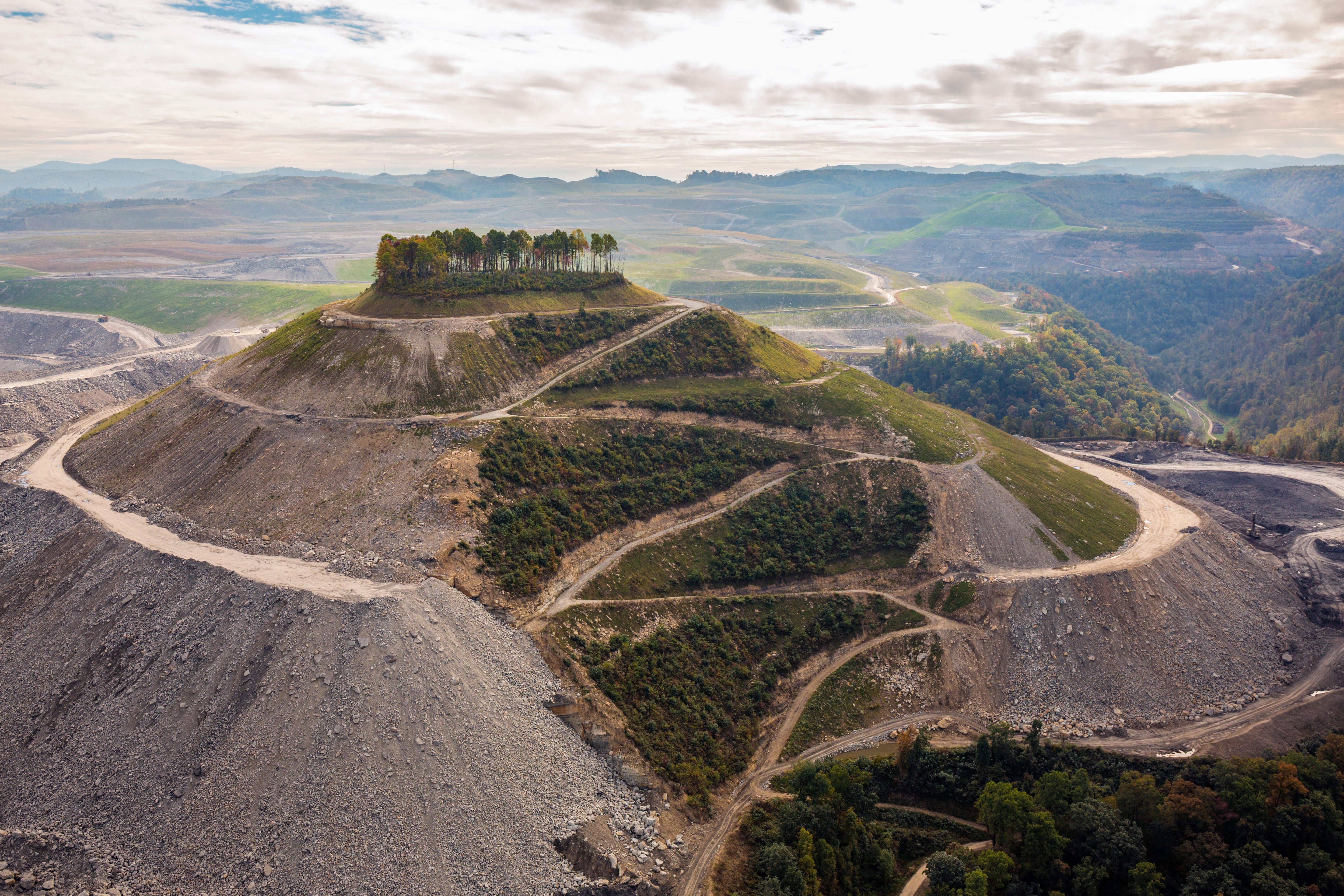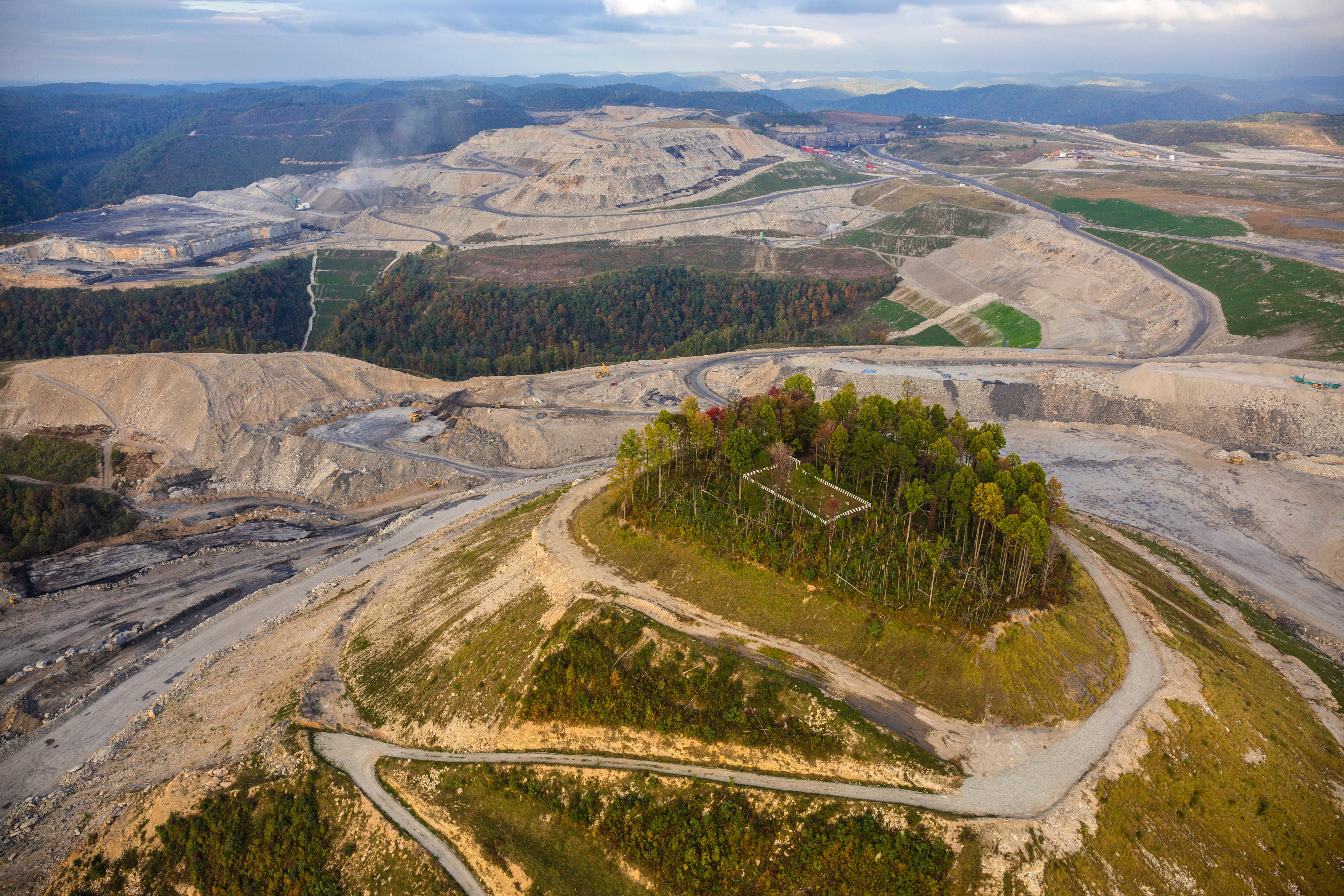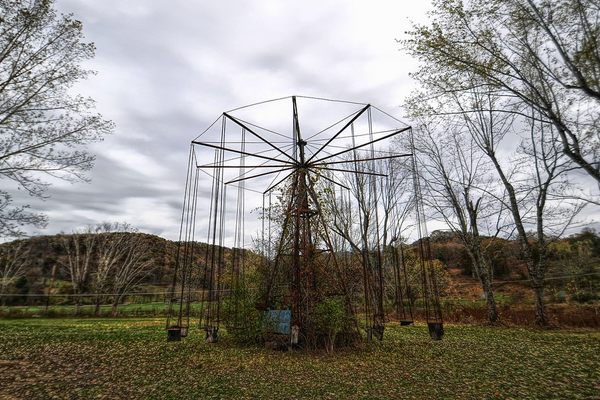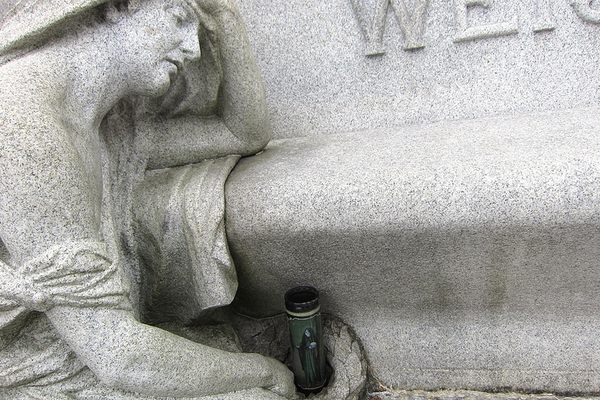The Mountaintop Cemeteries Surrounded by Coal Mines
Hard to access and hemmed in by explosive activity, these graveyards are stuck in limbo.

Death is a lonely business, but often graveyards are crowded places. This week, we’re remembering some of the loneliest graves in the universe—places of particular isolation, melancholy, and beauty. Previously: the most isolated war grave of the British Commonwealth, a Mormon pioneer’s grave, cremated remains on their way out of the solar system, thawing graves on an Arctic island, and a watery grave site in Florida untouched for 7,000 years.
In West Virginia, the pursuit of coal has led many drilling outfits to move mountains—or, at least, to strip their peaks. Sometimes, that involves navigating around the graves that have been up there for generations, and may be the last traces of towns that have been purchased by the coal companies.
To access seams of coal running through the mountains like buried black streams, mountaintop mining companies often remove hundreds of feet of rock and soil. In the process—which, speaking to PBS Newshour in 2017, Duke University biogeochemist Emily Bernhardt likened to “decapitation”—everything springing from the mountain is leveled, and often hurled into river valleys. By design, mountaintop removal mining has a large footprint—even if coal companies might argue that they tread softly. In 2009, John McQuaid, writing about mountaintop mining for Smithsonian, boarded a plane flying over dozens of square miles of mountain tops gouged out by explosives, and reported that the scene looked like “huge quarries scooped out of the hills.”
A mine can’t exist where a town does. So, after most of its residents accepted buyouts from a coal company in the late aughts, the community of Lindytown, in Boone County, all but disappeared. The church was bulldozed, and most of the homes were, too. The nearby cemeteries are still there—islands of the dead towering above felled forests. Visiting requires some logistical contortions, The New York Times reported: To conform to government regulations for surface-mining terrain, a visitor would need to “make an appointment with a coal company, be certified in work site safety, don a construction helmet, and be escorted by a coal-company representative.”
There’s the Jerrell family plot, roughly the size of tennis court, and, on a hill between Cook Mountain and Montcoal Mountain, one known as the Webb Cemetery. That one holds 37 graves, some of which date back two centuries and are marked by inscribed fieldstones. A mountaintop mining site booms a little ways up the ridge. It’s not an uncommon sight: “Cemeteries are strewn throughout mines all over the state,” Tom Clarke, then the mining and reclamation division director for the West Virginia Department of Environmental Protection, told National Geographic in 2013.

That same year, the Associated Press reported, six descendants of the people buried in the Jarrell cemetery sued the mining company Alpha Natural Resources in Boone County Circuit Court, alleging that the activity had encroached on their ancestors’ resting place. Driving the steep roads seemed to require four-wheel drive, and when you reached the top, “it was like going up on a mesa,” says Tom Rist, one of the attorneys for the plaintiffs.
Plaintiffs said mining activity occurred within 100 feet of the graveyard, and that blasts had caused headstones to buck out of the ground. (Alpha denied this.) In 2o15, “the case was settled favorably for the parties involved,” says Rist, though the terms of the settlement are confidential.
From state to state, laws vary widely with respect to human remains discovered during construction other land-altering projects, says Tanya Marsh, a professor at Wake Forest University School of Law who studies the treatment of graves and remains. “In some states, there is no reporting requirement at all,” Marsh says.
In West Virginia, the law was updated in 2010 to stipulate that if human remains are uncovered during alterations on private land, work must stop while the sheriff and historic preservation officers investigate, Marsh adds. The year before, the AP had reported that some mountaintop graves across the state had been relocated or lost, sometimes without the descendants’ families ever hearing about it until they went looking. “In all states, the kin of the deceased have rights to protect graves,” Marsh says. While this can provide some protection for marked graves, Marsh adds, “the only way to protect unmarked graves is for the state to enforce its laws regarding grave desecration.”
The long-term future of these isolated mountaintop cemeteries is uncertain—but they’re a stark reminder of how the activities of the living can affect the dead.















Follow us on Twitter to get the latest on the world's hidden wonders.
Like us on Facebook to get the latest on the world's hidden wonders.
Follow us on Twitter Like us on Facebook